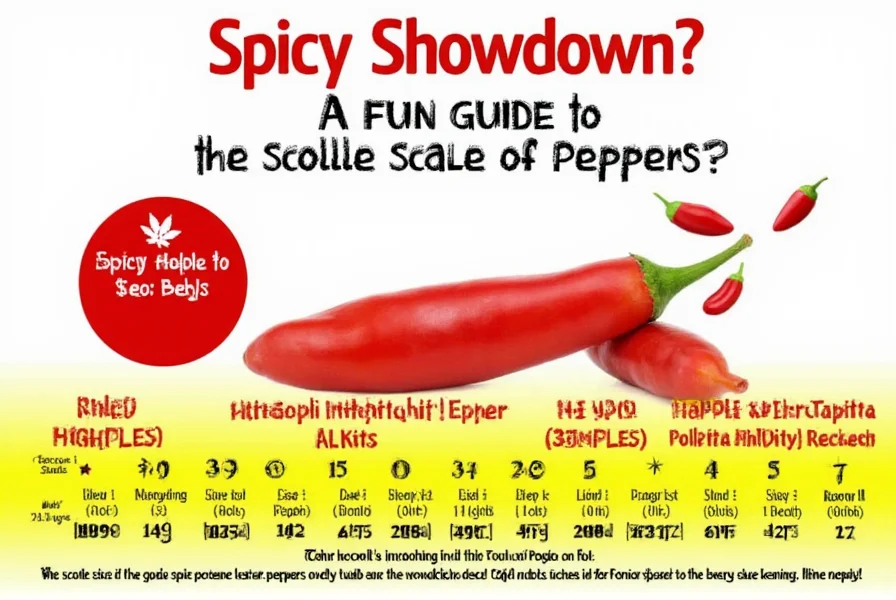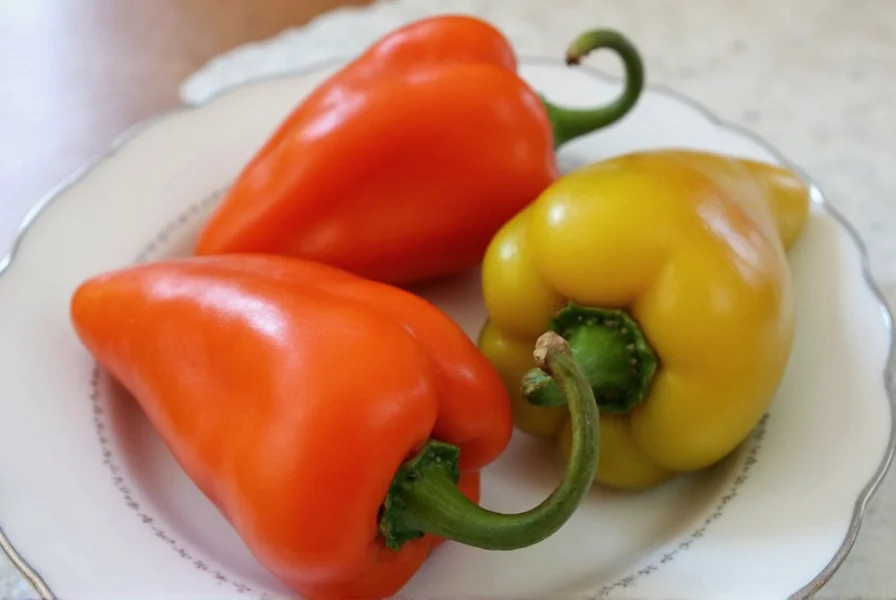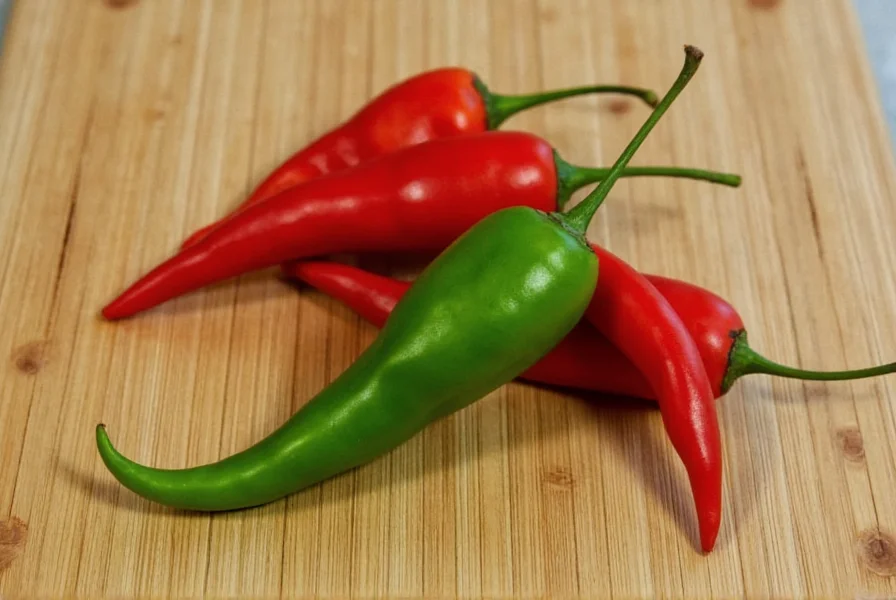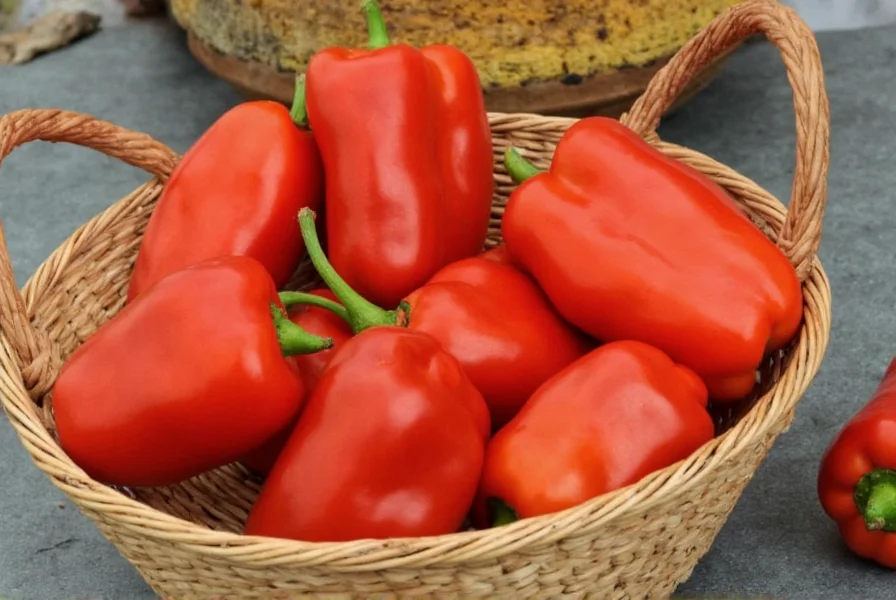Scotch Bonnet peppers are a type of chili pepper originating from the Caribbean, known for their intense heat (100,000-350,000 Scoville units) and sweet, fruity flavor profile. They're commonly used in Jamaican jerk seasoning, hot sauces, and Caribbean dishes.
Table of Contents
- What Is a Scotch Bonnet?
- How Hot Is It?
- Taste the Fire
- Creative Uses in the Kitchen
- Buying Guide: How to Choose the Best Scotch Bonnet
- Growing Your Own Heat
- Storage Tips to Keep the Spice Alive
- FAQs About Scotch Bonnet Peppers
- Conclusion
What Is a Scotch Bonnet?
The Scotch Bonnet, scientifically known as Capsicum chinense, is a variety of chili pepper that hails from the Caribbean and parts of South America. Its name comes from its resemblance to a traditional Scottish woolen bonnet (hat). This pepper is closely related to the habanero and shares similar heat and flavor characteristics—but with a more tropical twist.
Used extensively in Jamaican jerk seasoning, Trinidadian curries, and other regional cuisines, it's a key ingredient in hot sauces, marinades, and stews. It’s not just about heat—its unique aroma and fruity aftertaste elevate dishes beyond just spiciness.
How Hot Is It? Breaking Down the Scoville Scale
| Pepper | Scoville Units |
|---|---|
| Bell Pepper | 0 SHU |
| Jalapeño | 2,500 – 8,000 SHU |
| Habanero | 100,000 – 350,000 SHU |
| Scotch Bonnet | 100,000 – 350,000 SHU |
| Naga Viper | 1,000,000+ SHU |

Yes, the Scotch Bonnet sits comfortably next to the habanero, meaning it’s no joke. Handle with care, especially if you’re new to super-hot peppers. And remember—capsaicin is oil-based, so gloves are recommended when chopping these bad boys.
Taste the Fire: The Unique Flavor Profile
One thing that sets the Scotch Bonnet apart from other chilies is its incredible depth of flavor. While many hot peppers deliver straight-up fire, the Scotch Bonnet brings a balance of sweetness and smokiness to the table.
Flavor Notes:
- Sweetness: Subtle hints of tropical fruit like mango and papaya
- Smoky: Slight earthy undertones
- Spicy: Sharp, biting heat that builds gradually

This complex flavor makes it a favorite among chefs who want to enhance both heat and depth without overpowering other ingredients.
Creative Uses in the Kitchen
Ready to put that fiery pepper to work? Here are seven exciting ways to use Scotch Bonnet in your kitchen:
- Jerk Seasoning: A cornerstone in Jamaican jerk rubs, especially for chicken and pork.
- Hot Sauce Base: Blend with vinegar, garlic, and lime for an instant island-style sauce.
- Stews & Soups: Add a small amount early in cooking to infuse heat and aroma into rich broths.
- Grilled Seafood: Make a spicy butter with finely chopped Scotch Bonnet and lemon zest for grilled shrimp or fish.
- Vegetable Dishes: Stir-fry with eggplant, okra, or green beans for a punchy side dish.
- Rice & Beans: Cook into rice or bean mixtures for a spicy Caribbean flair.
- Fruit Salsas: Mix diced pepper with pineapple or mango for a fresh, tangy topping.

Pro Tip: Start small! You can always add more heat later. Remove the seeds and membranes for a milder kick.
Buying Guide: How to Choose the Best Scotch Bonnet
| Feature | Good Quality | Poor Quality |
|---|---|---|
| Color | Bright orange or red | Dull or brownish |
| Texture | Firm and smooth skin | Soft, wrinkled, or shriveled |
| Size | Moderate size (about 1-2 inches) | Overly large or small |
| Smell | Fruity, earthy scent | Moldy or sour smell |

Top Picks for Ready-to-Use Products
If you can’t find fresh Scotch Bonnet peppers, here are three top-rated products that bring that island flavor right to your door:
- 1. Grace Jerk Seasoning with Scotch Bonnet
- Features: Pre-mixed blend with ground Scotch Bonnet
- Advantages: Saves time; great for beginners
- Best For: Quick jerk marination of meats and veggies
- Occasions: Weeknight dinners, grill parties
- 2. Da' Bomb Ground Scotch Bonnet Powder
- Features: Pure dried and powdered Scotch Bonnet
- Advantages: Long shelf life; potent flavor
- Best For: Soups, rubs, and spice blends
- Occasions: Meal prep, outdoor grilling
- 3. Caribbean Joe Hot Sauce (Scotch Bonnet Blend)
- Features: Vinegar-based sauce with real pepper pulp
- Advantages: Balanced heat with bold flavor
- Best For: Tacos, sandwiches, wings
- Occasions: Game day, breakfast hot sauces
Growing Your Own Heat: Cultivating Scotch Bonnet at Home
Want to take your spice journey one step further? Try growing your own Scotch Bonnet plants! These peppers thrive in warm climates but can be grown indoors with proper care.
Growing Tips:
- Start seeds indoors 6–8 weeks before the last frost.
- Keep soil moist but well-draining.
- Provide full sun (at least 6 hours per day).
- Harvest when peppers turn bright red or orange.
They do well in containers, making them perfect for patios and balconies. Just remember—once they start producing, you’ll never run out of reasons to cook with fire!
Storage Tips to Keep the Spice Alive
Got extra Scotch Bonnets lying around? Here’s how to store them for maximum longevity:
- Refrigerator: Store in a plastic bag for up to 2 weeks.
- Freezer: Chop and freeze in ice cube trays with water or oil for easy use.
- Drying: String them up or dehydrate until brittle. Grind into powder for future use.
- Pickling: Preserve in vinegar for a tangy, spicy condiment.
Tip: Always label frozen bags or jars with the date—it helps track freshness and avoids confusion with less-spicy peppers!
FAQs About Scotch Bonnet Peppers
Q: Can I substitute Scotch Bonnet with Habanero?
A: Yes! They have nearly identical heat levels and flavor profiles. Use them interchangeably in most recipes.
Q: Is Scotch Bonnet dangerous to eat?
A: No, though it’s very spicy. If eaten in moderation, it’s safe and even healthy due to its high vitamin C content.
Q: What’s the best way to cool down after eating too much Scotch Bonnet?
A: Dairy helps neutralize the burn. Try milk, yogurt, or sour cream to soothe the heat.
Q: Are there different colors of Scotch Bonnet?
A: Absolutely! You’ll find green (unripe), orange, red, and sometimes yellow varieties, each with slightly different flavor nuances.
Q: Can I use Scotch Bonnet in desserts?
A: In small amounts, yes! Some chefs add tiny pinches to chocolate sauces or fruit compotes for a surprising kick.
Conclusion
Whether you’re chasing the Caribbean breeze or spicing up your everyday meals, the Scotch Bonnet is a must-have in your spice arsenal. From its explosive heat to its fruity complexity, it adds drama and depth to every bite.
Now that you’ve got the knowledge, tools, and inspiration, go ahead and experiment! Remember to respect the heat, embrace the flavor, and above all—have fun with it.
Stay spicy, friends!
About This Site
Our mission is to provide accurate, helpful information about spices and peppers. All content is reviewed by culinary experts to ensure accuracy and safety. For questions or feedback, please contact us at support@example.com.










 浙公网安备
33010002000092号
浙公网安备
33010002000092号 浙B2-20120091-4
浙B2-20120091-4